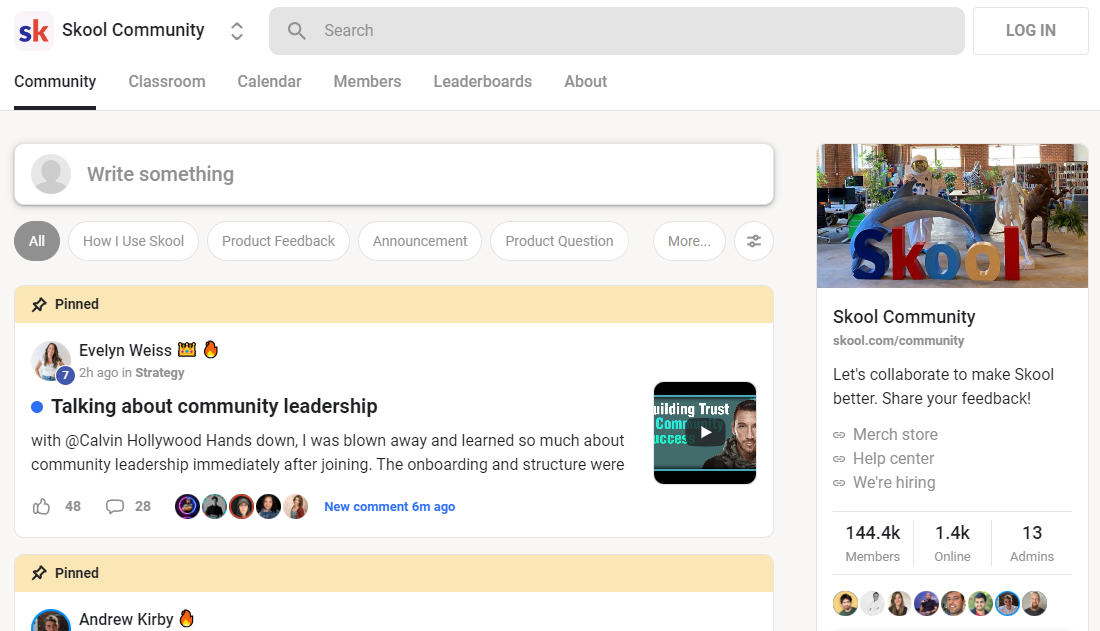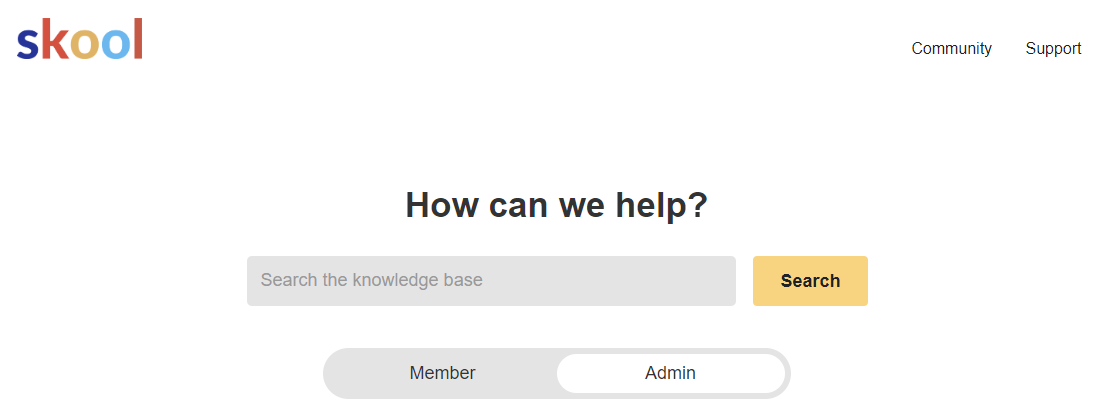Skool supplies best-in-class gamification features that improve interaction. For example, participants can gain degrees based upon their participation, which open course web content and other incentives that further motivate them.
Formerly, designers had to make use of various tools for holding courses, developing communities and handling e-mail advertising. This developed a disjointed experience for both creators and their audiences.
Developing Courses
Skool has a straightforward, user-friendly user interface and focuses on community structure and course holding over other attributes. It enables developers to produce a dynamic neighborhood for their courses and training programs by linking them with the right target market. This likewise helps them monitor the health of their content business with the help of an easy control panel.

To begin, a person can sign up for a free 14-day trial of Skool. After that, they can pay $99 a month for the platform to host a solitary area. There are nothing else prices options offered for the moment. Skool likewise processes repayment and pays developers weekly, but it does bill a 2.9% transaction charge.
Among the one-of-a-kind elements of Skool is that it can be used to produce interactive programs. These can include real-time webinars, team jobs and real-time discussions. These kinds of courses encourage involvement and rise training course completion rates. Additionally, Skool’s gamification features help to motivate neighborhood participation. For example, members can make points and unlock program material when they get to certain levels in the area.
Users can also make use of the social feed on Skool to upload updates and engage with others in the area. The feed resembles a Facebook team, however with an extra regulated means of uploading. This assists to stay clear of the kind of spam and abuse that happens on other social systems.
Handling Communities
Skool is a very straightforward platform to utilize, for both participants and admins. Its simplicity is one of its major selling factors– when somebody joins your area they will not be confronted with a lot of alternatives or features that can thwart their experience and confuse them.
The platform begins as an exclusive team by default, however you can easily change this to open up your area to any individual that you intend to become part of it. When you’ve done this you’ll see a social feed like you would on Facebook Groups or WhatsApp (however without all the rip-off things and swearing).
You can likewise include a class tab to your neighborhood that you can make use of to share academic web content with your participants. This function is especially beneficial for communities that are focused on knowing or professional advancement as it aids to develop an instructional structure and makes it easy for members to track their progression. Additionally, the platform has gamification aspects that enable members to earn factors by liking articles or remarks. When they get to a certain level they can open resources, such as programs, even more driving involvement.
The various other trendy point is that Skool has a mobile application, much like Mighty Networks or Slack, so members can keep up with your community and connect on the go. This is a terrific method to encourage and involve your members and to help them get support from each various other when they need it, as opposed to simply turning to you for solutions.
Skool API
Skool concentrates on gamification, permitting users to make factors and badges for their payments. This encourages participants to engage with the area and add to conversations. In turn, this helps them level up and unlock benefits like videos and various other material. Admins can also set courses to be opened at certain levels to more drive involvement.

The Skool interface is very clean and instinctive. Its highlights consist of the Community tab, which looks just like a Facebook team feed. Right here, users can post comments and message along with upload pictures, links and videos. Members can also view each others accounts and connect with them. Additionally, users can produce exclusive groups in the community to review specific subjects.
An additional feature of Skool is the Classroom tab, which resembles a YouTube livestream or Zoom meeting. Utilizing this, administrators can hold trainings and webinars for their students. They can additionally add events in the calendar to remain updated on upcoming events and Skool API.
However, some elements of Skool could utilize enhancement. For instance, the system isn’t versatile when it concerns money making as individuals can not supply numerous rates rates for their training courses and community memberships. Furthermore, the device lacks an email marketing function, which might be a bargain breaker for some program developers. It additionally does not have indigenous video organizing, implying that users need to use exterior platforms like YouTube, Loom and Vimeo for their video clips.
Including Content
The procedure for adding web content and connecting with members on Skool is very easy and simple. Admins can create blog posts with text, GIFs, videos and polls. They can likewise include occasion schedules to inform neighborhood participants of upcoming group Zoom calls or live streams. In addition, they can use Skool’s e-mail broadcast feature to send a message to the entire community with a single click. This removes the need for labeling and listing division, which can be difficult.
Additionally, Skool’s gamification attributes can boost engagement and user retention. It urges members to communicate with the material often by rewarding them with different advantages. These consist of unlocking course content, making points and gaining a place on neighborhood leaderboards.
While Skool provides a host of valuable features for creating and delivering on-line training courses, it’s not for everybody. The platform is best for instructors, consultants and other details entrepreneurs. Nevertheless, the cost can be a barrier for some individuals aiming to monetize their on-line content.
In addition, the lack of standard tiers and a brief free trial may be a deterrent for many. On top of that, the platform’s laser-focus on eLearning can make it less desirable for people who wish to offer various other digital products. Nonetheless, regardless of these disadvantages, Skool API is still a viable alternative for anyone seeking to create and monetize online programs.